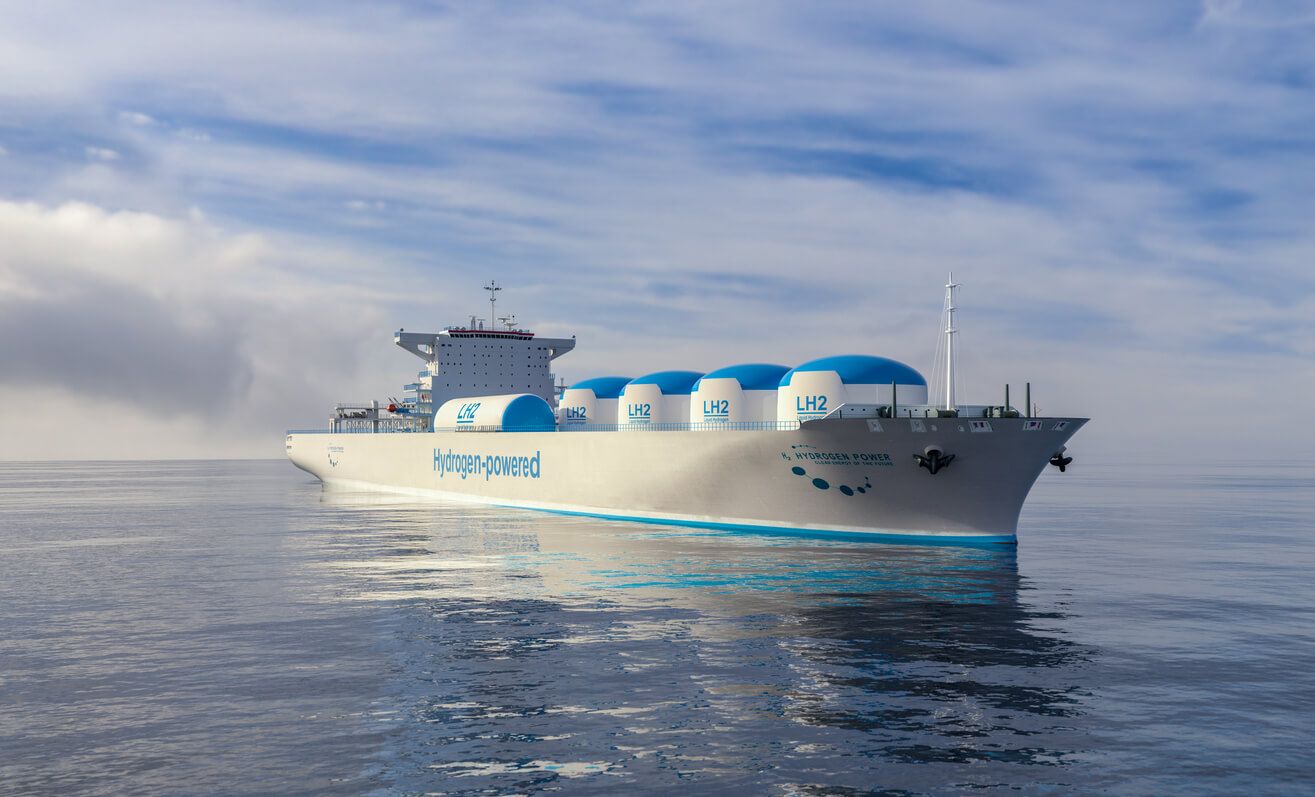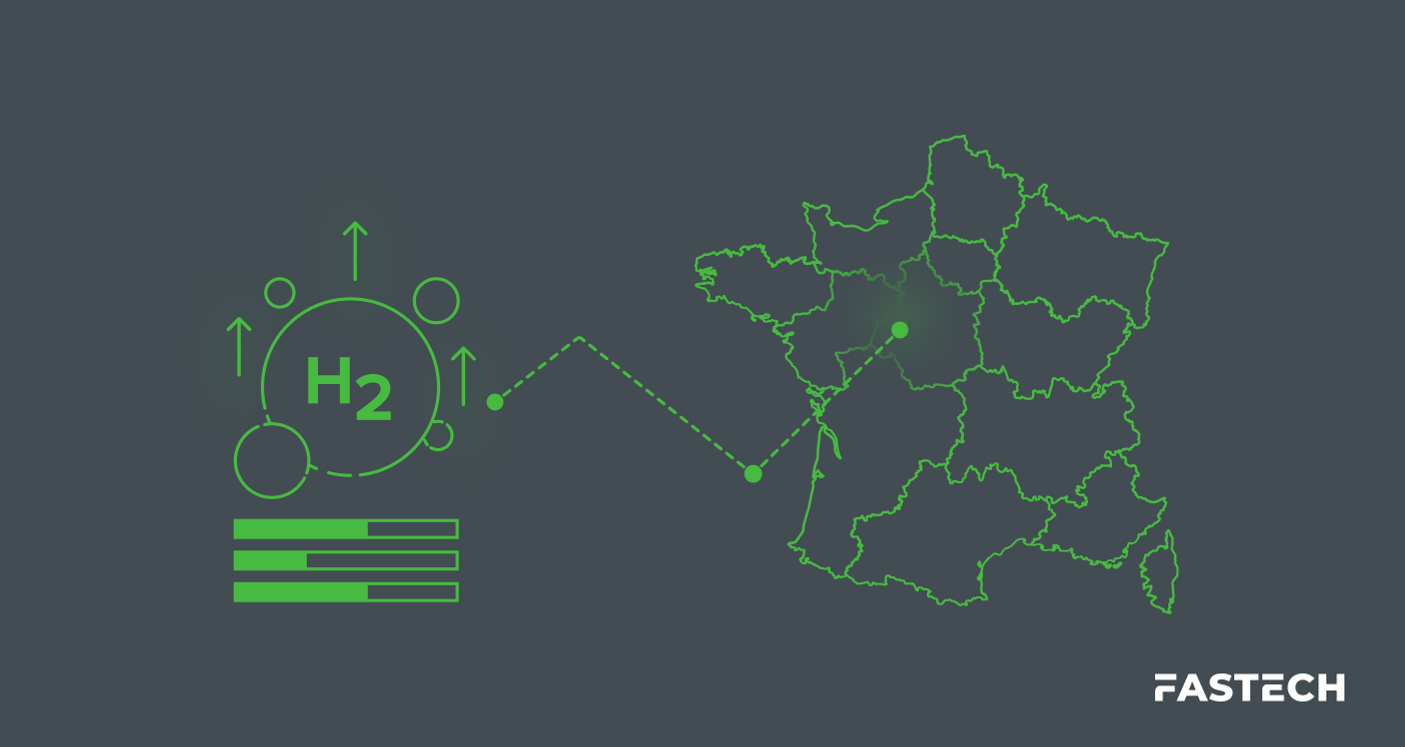Exploring the Potential of Hydrogen for Maritime Mobility

The global maritime industry is due for a transformative shakeup. Accounting for approximately 3% of worldwide greenhouse gasses (GHG)—with maritime emissions rates accelerating faster than most other sectors—the shipping industry faces increased pressure to reduce its carbon footprint, and fast.
As such, plans for emissions-free sailing are pressing ahead, with hydrogen-powered ships emerging as potential solutions in the quest for sustainable shipping.
But what does maritime hydrogen development entail?
Let's explore some use cases for maritime mobility with hydrogen.
Understanding Hydrogen Fuel Cells
Hydrogen fuel cells are devices designed to convert the chemical energy of hydrogen and oxygen into electrical energy, with water as its only byproduct. They function like batteries, except they don’t require charging. So long as they have fuel, they will continue to produce electricity and heat. The Department of Energy explains this process simply:
“A fuel, such as hydrogen, is fed to the anode, and air is fed to the cathode. In a hydrogen fuel cell, a catalyst at the anode separates hydrogen molecules into protons and electrons, which take different paths to the cathode. The electrons go through an external circuit, creating a flow of electricity. The protons migrate through the electrolyte to the cathode, where they unite with oxygen and the electrons to produce water and heat.”
There are several “colors” of hydrogen, depending on how they're produced. Green hydrogen is produced through electrolysis using renewable energy sources. Blue hydrogen is produced from natural gas with carbon capture. Both of which are the most sustainable, environmentally friendly options for producing hydrogen fuels and cells.
Benefits of Hydrogen Fuel Cells in Maritime Applications
Traditional maritime fuels, such as diesel and heavy fuel oil, don’t just produce significant CO2 emissions. They also emit harmful pollutants—all of which exacerbate air quality deterioration, water pollution, and climate change.
Historically, these fossil fuels were necessary to provide the energy needed to power ships and other maritime vessels, thus driving global maritime commerce. However, there’s been an industry-wide push to find cleaner and more sustainable alternatives in recent years.
Thus far, hydrogen fuel cells are the most promising solution for maritime vessels and other heavy-duty mobility vehicles. Advantages include:
- Increased range – Hydrogen fuel cells offer extended range capabilities for naval vessels, allowing them to travel greater distances without requiring frequent refueling or recharging.
- Faster refueling compared to batteries – Compared to recharging batteries, refueling hydrogen fuel cells is a faster process, which results in quicker turnaround times and less vessel downtime.
- Reduced emissions – As noted, hydrogen fuel cells produce zero GHGs, releasing only water vapor and heat into the atmosphere.
- Limiting noise pollution – Hydrogen fuel cells are relatively quiet, especially when compared to traditional combustion engines. This creates a quieter and more pleasant maritime environment for both the crew and aquatic life.
- Ease of retrofitting ships – According to the CSIS, a key advantage of hydrogen over other fuel alternatives is the relative ease of retrofitting existing ships with hydrogen fuel cells. The study projected that without requiring any modifications, hydrogen could replace 43% of voyages between the United States and China. With minor adjustments to fuel capacity or operations, hydrogen has the potential to replace as much as 99% of these voyages.
- Storage capabilities – Unlike wind and solar power, hydrogen fuel can be stored in large amounts for long periods, which is necessary for ships operating in the middle of the ocean.
Current and Potential Applications for Hydrogen in Maritime Activities
Hydrogen fuel cells are already being integrated into the industry, with low-speed, large-capacity vessels like ferries and research vessels representing a cost-effective starting point.
In 2023, the MF Hydra—the world's first liquid hydrogen-powered ferry launched by the Norwegian business Norled—was unveiled. The 82.4-meter-long vessel can carry up to 300 passengers and 80 vehicles at a speed of 9 knots. And its 80 cbm hydrogen storage tank will enable the ferry to decrease its yearly carbon emissions by up to 95% as it travels a triangular route between Hjelmeland, Skipavika, and Nesvik.
Looking ahead, there’s potential for expanding the use of hydrogen fuel cells in larger maritime vessels. Cargo ships, cruise liners, and offshore platforms present opportunities for the integration of hydrogen technology. By leveraging fuel cells' longer range and faster refueling capabilities, these sectors could significantly reduce emissions and operational costs while maintaining their crucial roles in global commerce and transportation.
Infrastructure and Support
For the hydrogen maritime dream to become reality, a robust infrastructure and support ecosystem will be essential. This ecosystem update will include:
- Establishing hydrogen production facilities near ports.
- Developing a network of hydrogen refueling stations.
- Implementing safety regulations and standards for handling and storing hydrogen.
- Investing in research and development to optimize hydrogen technologies.
- Collaborating between stakeholders, governments, and international organizations to drive funding, policy support, and knowledge sharing.
Currently, H2Ports is one such initiative taking place at the Port of Valencia. The European project focuses on testing heavy-duty port equipment powered via Hydrogen Fuel cells and becoming the first port in all of Europe capable of supplying green hydrogen fuel to cargo ships.
Moreover, the port achieved a remarkable milestone by introducing the world's first hydrogen-powered machinery—a net-zero 4x4 terminal tractor. This groundbreaking development of heavy-duty hydrogen transport enables emissions-free container movement within the Port of Valencia, setting a global example for eco-friendly port operations.
The Future of Maritime Hydrogen
Although maritime hydrogen applications are in their early stages of development, the future looks bright. And, as the pressure to reduce greenhouse gas emissions only intensifies, hydrogen will emerge as one of the most promising solutions for decarbonizing shipping operations.
At FASTECH, we’re doing our part to champion the hydrogen future. Whether it’s discussing the latest advancements and breakthroughs in the field, or leading projects that lay the foundation for the future with end-to-end renewable energy engineering, procurement, and construction solutions, our mission is to innovate today to secure a more sustainable tomorrow.
Sources:
CSIS. Hydrogen: The Key to Decarbonizing the Global Shipping Industry? https://www.csis.org/analysis/hydrogen-key-decarbonizing-global-shipping-industry
S&P Global. Your climate change goals may have a maritime shipping problem. https://www.spglobal.com/esg/insights/your-climate-change-goals-may-have-a-maritime-shipping-problem
Department of Energy. Fuel Cells. https://www.energy.gov/eere/fuelcells/fuel-cells#:~:text=Fuel%20cells%20have%20lower%20or,at%20the%20point%20of%20operation
Interesting Engineering. 'MF Hydra': World's first liquid hydrogen-powered ferry gets operational. https://interestingengineering.com/transportation/mf-hydra-worlds-first-liquid-hydrogen-powered-ferry
Valencia Port. Valenciaport becomes the first port in the world to operate hydrogen-powered 4×4 trucks at its terminals. https://www.valenciaport.com/en/valenciaport-becomes-the-first-port-in-the-world-to-operate-hydrogen-powered-4x4-trucks-at-its-terminals/




